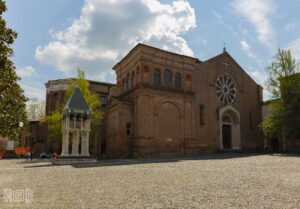Do you want to know the 5 attractions not to be absolutely missed in Bologna? You are in the right place!
1. Piazza Maggiore
Piazza Maggiore (or Piazza Grande for Bologneses) is the heart of the city, the center of civil and religious life in Bologna. The current square is the result of many stratifications and changes that have affected the city.
Its history begins in 1200, when the Municipality of Bologna began to buy lands and buildings to build a space with two functions. The first aim was to create a place where commercial and exchange activities could be brought together; the second function of the new square was to be the symbol of the importance of the municipal institution.
In the 16th century, the square was renovated at the behest of Cardinal Carlo Borromeo, with the addition of Piazza del Neptune and the Palazzo dell’Archiginnasio nearby. In 1860, Piazza Maggiore was named after Vittorio Emanuele II, until 1943 when his monument was moved to the Giardini Margherita. From that moment, the square took its current name of Piazza Maggiore.
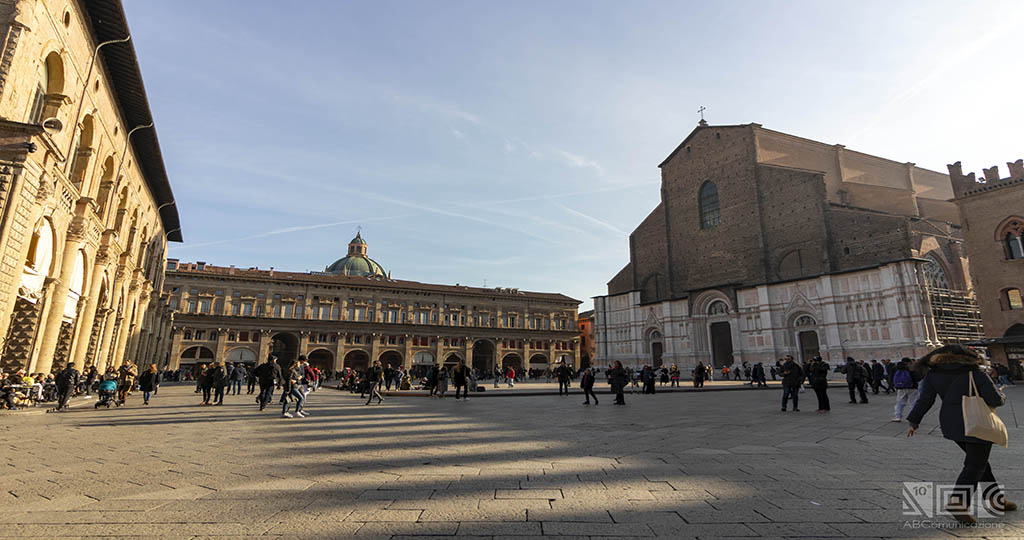
The crescentone (the pedestrian platform) that can be seen in the center of the square was added in 1934 and it is thought that the name derives from the “bolognese crescente”, a typical Bolognese focaccia.
For the most superstitious students, it should be remembered that there is a legend on Piazza Maggiore. University students are advised not to cross the square diagonally passing through its center, as it could delay graduation times or even prevent it.
In Piazza Maggiore it is also possible to visit the main historical buildings and monuments that have become symbols of Bologna, such as Palazzo d’Accursio, Palazzo del Podestà, Palazzo dei Banchi, the Salaborsa Library and the Basilica of San Petronio.
Find out more in the article The most important square in Bologna and its buildings: Piazza Maggiore.
2. The Fountain of Neptune
The base of the fountain was designed by Tommaso Laureti and it is divided into three large sections, with themed decorations. At the base there are figures from Greek mythology such as the Naiads (the sea nymphs). In the middle section you can find various papal emblems and, on the last step you can see 4 putti representing the rivers Nile, Ganges, Amazon River and Danube. On the top you can admire the statue of Neptune, built in 1565 by the famous Flemish sculptor Jean de Boulogne, also called Giambologna.
The water that initially fed the fountain came from the waters of the Remonda River, but the flow of the aqueduct soon became insufficient. So Laureti himself built the Conserva di Valverde, a new water collection system.
Few people know that the Fountain of Neptune was built to embellish the ancient half-destroyed square, following the various demolitions of the buildings that surrounded it. The citizens of the time, not immediately recognizing its value, started to use the fountain as a wash house for clothes or for washing vegetables.
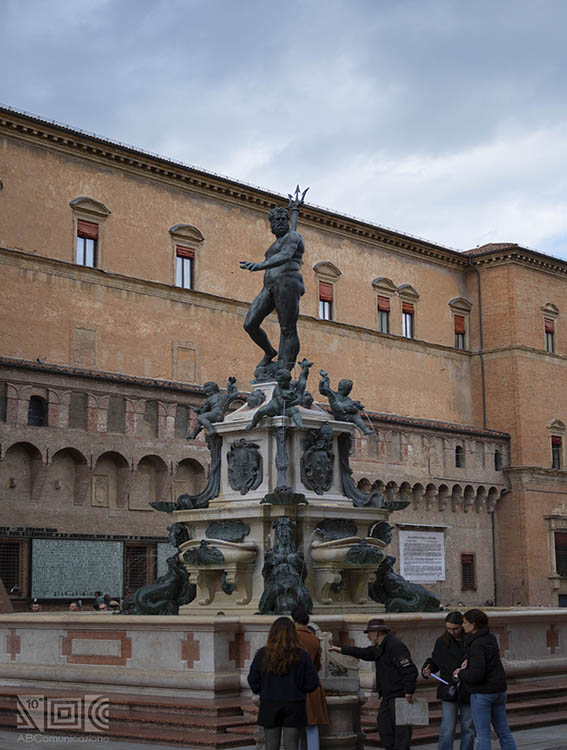
Discover everything you need to know in the article One more reason to visit Bologna: The Fountain of Neptune.
Other curiosities about the Fountain of Neptune concern the famous seven secrets of Bologna. Looking at it from a particular perspective, the fountain hides an optical effect, find it out in the article A journey through the Seven Secrets of Bologna.
3. The Two Towers
The Garisenda tower and the Asinelli tower are another symbolic monument and an international icon of Bologna.
In the past, the city boasted the presence of numerous towers that had a function of both military and of protection or to show the relevance of noble families, as they gave prestige to those who ordered their construction. The panorama of the city was characterized by these high structures, so that Bologna earned it the nickname “turrita”.
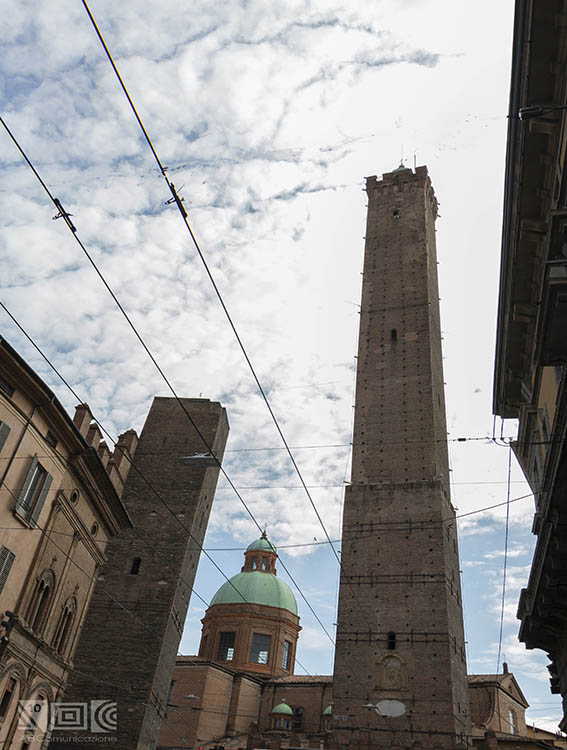
The two towers of Bologna are located at the bottom of St. Rizzoli and they are clearly visible thanks to their height.
The Asinelli tower was built in 1109 at the behest of the Asinelli family, who attributed to it the defensive function of sighting enemies. At the base, in fact, there is a fortress that was used to host the soldiers. Currently, the space is occupied by some artisan shops, in which you can buy objects and souvenirs.
Another function of the Asinelli tower was that of a place of imprisonment and torture: at the top there is still a bloody cage, where those condemned to death were locked up and left to die of hardship.
The Asinelli tower can be visited and, after 498 steps, you can admire a breathtaking view of Bologna.
There are many curiosities about the Asinelli tower, including the experiment of the physicist Gian Battista Guglielmi on the fall of the graves and the mystery of the broken vase at the top. If you want to know more, do not miss the articles Find out with us the myths and curiosities of the two towers of Bologna: Garisenda and Asinelli and A journey through the Seven Secrets of Bologna.
The Garisenda tower is lower than the other one, with a height of 47 meters and, unfortunately, it is not visitable. Its construction dates back to the year 1110 and it is said that its height was of 60 meters, but due to various architectural problems it was lowered. For this reason, today the tower is leaning about 4 degrees (even more than the Tower of Pisa!). The Garisenda tower was also the subject of praise from various writers and famous people, from Wolfgang Goethe to Dante Alighieri.
4. The Basilica of San Petronio
The Basilica of San Petronio is located in Piazza Maggiore and it is the most important church in Bologna, as well as the fifth largest church in the world. The basilica is dedicated to Saint Petronio, the patron saint of Bologna.
Its construction began in 1390 and the works went on for centuries, but they never ended definitively, probably due to the lack of funds: its facade is still incomplete today. This flaw, over time, has turned into a quality, making it a unique Gothic church.
The Basilica of San Petronio was initially owned by the Municipality of Bologna and it has assumed several functions over time: from the location of institutional events to a court and a public meeting place. With the Lateran Treaty of 1929, the property passed into the hands of the Diocese.
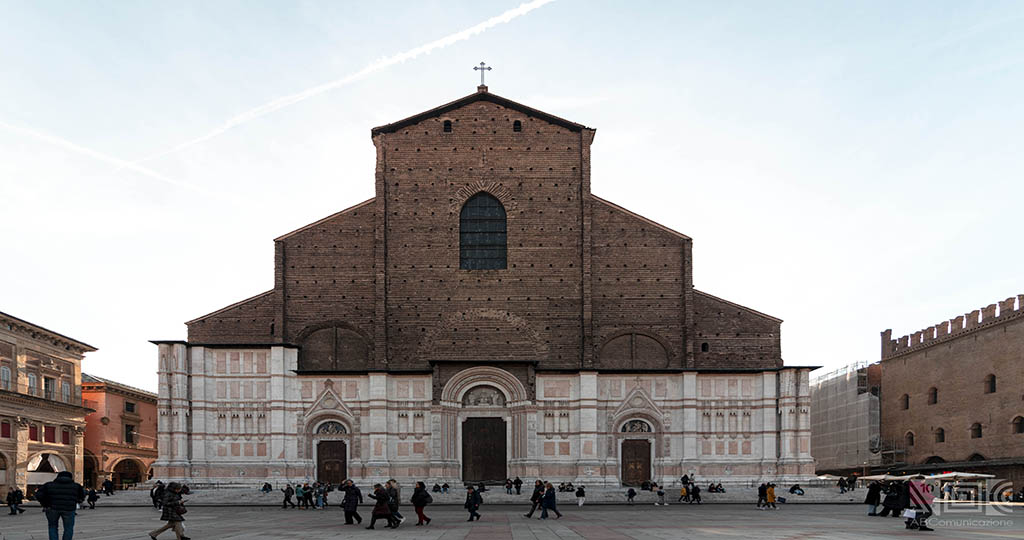
The huge brick facade characterized by a mixture of styles stands out on Piazza Maggiore. Inside the building, you can admire the latin cross plan with three naves and various works of art including the Bolognini Chapel frescoed with the Stories of the Three Magi and the representation of the Last Judgment. In addition to that, inside the Basilica of San Petronio are kept the “Four Crosses”, symbols of the Christian faith. These crosses had been set on Bologna’s first wall circle, the selenite circle and later moved inside the Basilica, in order to make the streets “laic” (learn more about the walls of Bologna in the article A journey to discover the walls of Bologna).
In the article Everything you need to know about the Church of San Petronio in Bologna you can discover all the curiosities about the Basilica of San Petronio. Do not miss it!
5. The sanctuary of the Madonna of San Luca
Located on the Colle della Guardia, the Sanctuary of the Madonna of San Luca stands out over the city.
Its birth is linked to a legend: it is said that, in the 12th century, a pilgrim in Constantinople received from the Evangelist Luke a painting of the Madonna with Child, which he was supposed to bring right on the Colle della Guardia.
The structure that we can admire today, however, dates back to the 1700s and it has undergone various renovations and changes over the years. Its construction is due to a woman, Angelica Bofantini, who created the first church dedicated to the Madonna of San Luca.
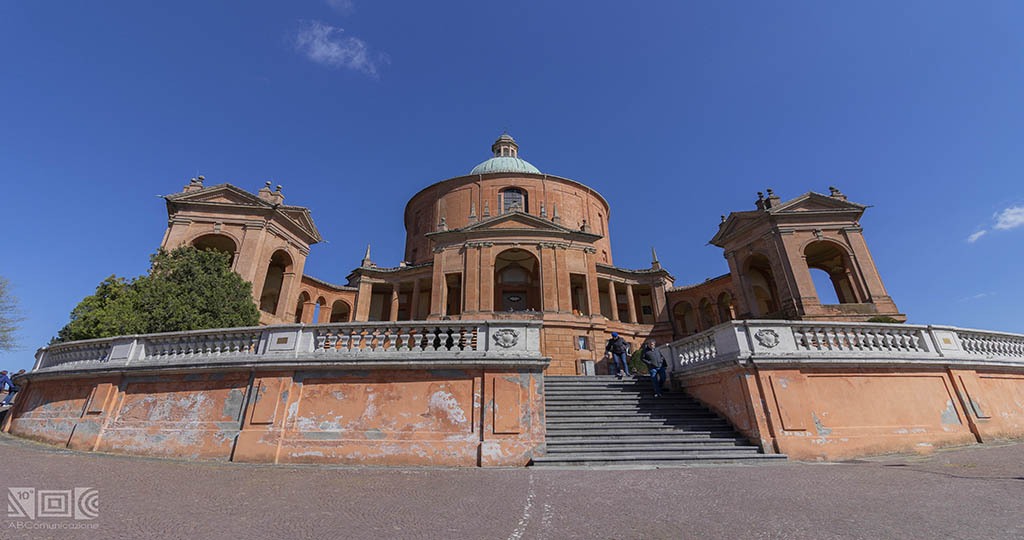
The exterior is in baroque style and it is characterized by the typical orange color of bolognese buildings (from that, its nickname “La Rossa”). The entire structure can be visited and it has a panoramic terrace from which you can admire the whole city of Bologna. Inside the building, there are various works of art, such as altar loaders made by Donato Creti and Guido Reni.
One of the features that makes the Sanctuary of the Madonna of San Luca unique is its porch. In fact, it is the longest portico in the world, with its 3796 meters.
The portico also has a symbolic meaning: with its 666 arches (a number that in religion symbolizes Satan) embodies the snake-devil, which is crushed by the sanctuary dedicated to the Madonna of San Luca. For religious people, the climb to the top is therefore a purification from sins.
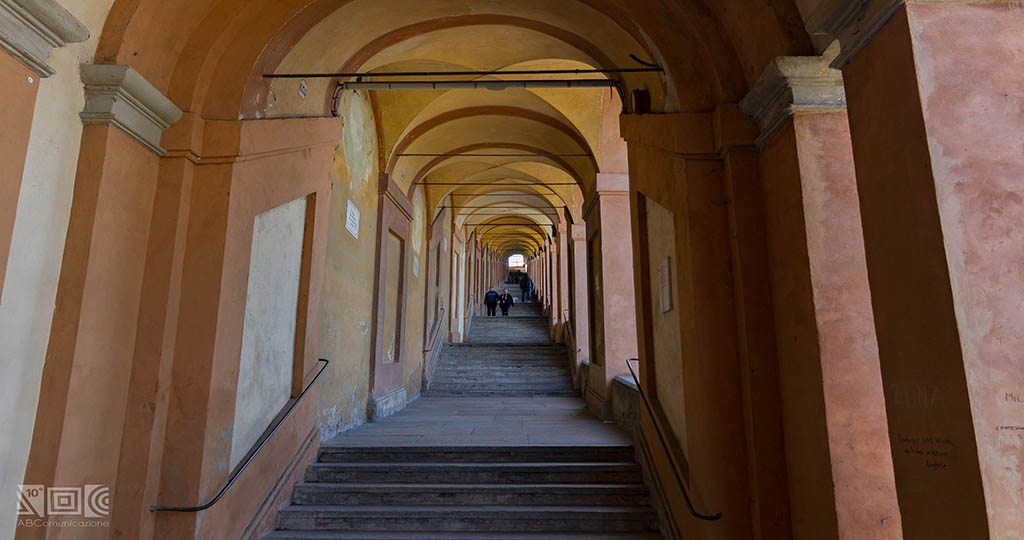
The week of Ascension, moreover, the image of the Madonna with Child is carried in procession to the city center, a tradition born from the “Miracle of rain”.If you want to discover many other curiosities about the Sanctuary of the Madonna of San Luca, check the article The Sanctuary of the Madonna of San Luca between sacred and legend.




